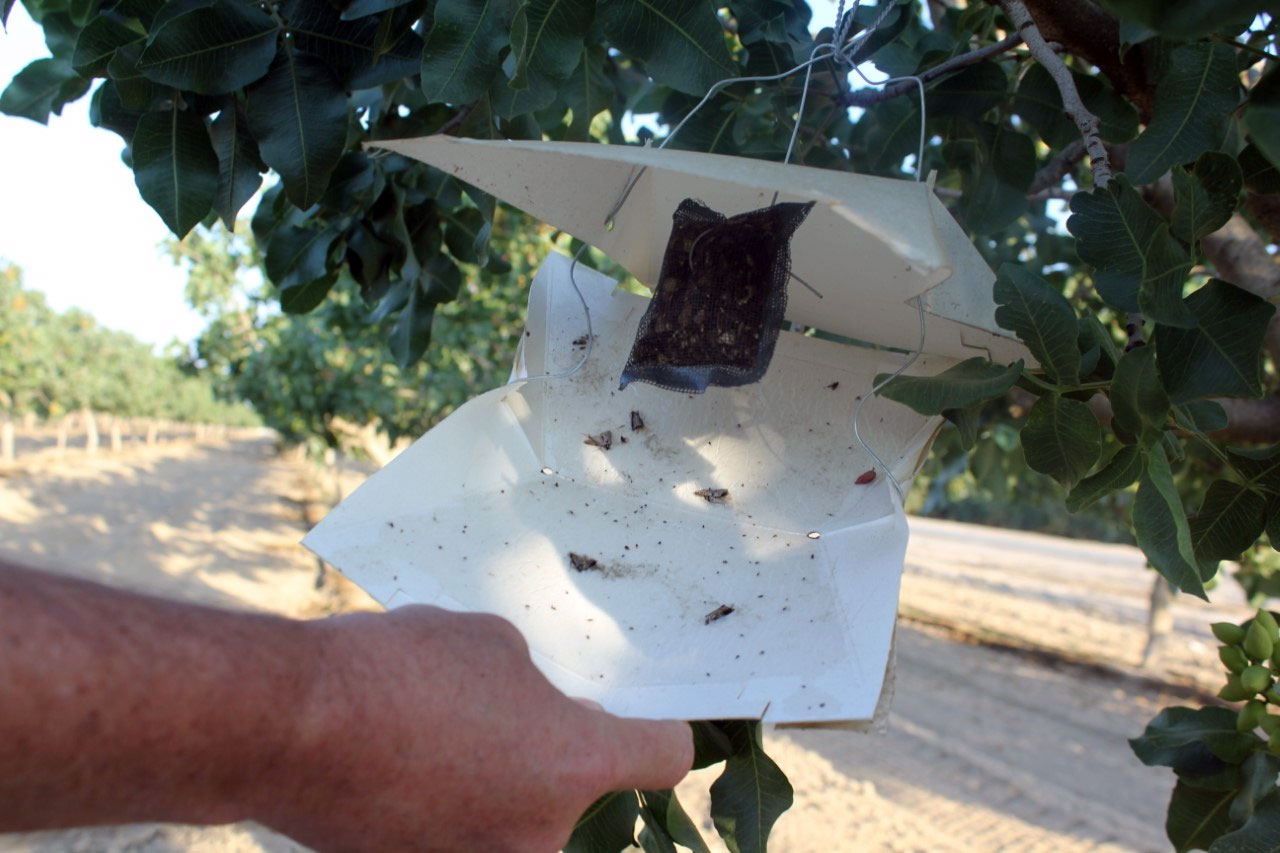
Pistachio nuts were invisible this year. That is they were invisible to the damaging navel orangeworm. United States Department of Agriculture/Agricultural Research Service (USDA/ARS) researcher Joel Siegel said that good pistachio hull integrity is the reason to thank for the very minimal navel orangeworm (NOW) damage in this year’s pistachio crop.
Siegel explained that as pistachio nuts mature, hull slip begins. At that point there is an odor cue that alerts NOW to move in and lay eggs. As long as the hulls remain intact, Siegel said, NOW do not recognize the nuts as an egg-laying site.
Good hull integrity until harvest means those nuts were not susceptible or accessible to NOW.
Navel orangeworm has become a serious pest in pistachio orchards, causing high amounts of crop damage in some years. After NOW larvae hatch, they bore into the kernels, deposit frass and webbing and can cause formation of molds that produce aflatoxin. Later hatching larvae overwinter in mummy nuts on the ground and become the early season adults.
Two cultural practices—effective removal with destruction of mummy nuts in fall or winter (sanitation) and early harvest with rapid removal of nuts from the orchard floor—are essential components of an effective navel orangeworm control program.
This year marks the second in a row that low NOW damage has been reported in the pistachio crop. Siegel said the consensus among processors and growers who supply him with grade sheets is that nuts harvested with the first shake had “as close to zero damage as you can get.” The later second shake did reveal more NOW damage to the nuts, but was still in the acceptable range. Hulls maintained integrity until mid-September, making it more difficult for NOW to find vulnerable nuts and lay eggs.
Trap counts for NOW were low going into April, Siegel said, but they picked up in July. This year’s counts were lower than 2018. Navel orangeworm last took a toll on the 2017 pistachio crop when trap counts were 8-10 times higher than the last two years. That year, Siegel noted, nuts vulnerable to NOW damage were found in early August.
The exact mechanism for hull integrity is not known, but Siegel said that it is environmental.
In addition to the low NOW damage, Siegel said that kernel size in this year’s crop is larger than last year’s making the 2019 harvest quality ideal.

Cecilia Parsons
Cecilia Parsons has lived in the Central Valley community of Ducor since 1976, covering agriculture for numerous agricultural publications over the years. She has found and nurtured many wonderful and helpful contacts in the ag community, including the UCCE advisors, allowing for news coverage that focuses on the basics of food production.
She is always on the search for new ag topics that can help growers and processors in the San Joaquin Valley improve their bottom line.
In her free time, Cecilia rides her horse, Holly in ranch versatility shows and raises registered Shetland sheep which she exhibits at county and state fairs during the summer.















